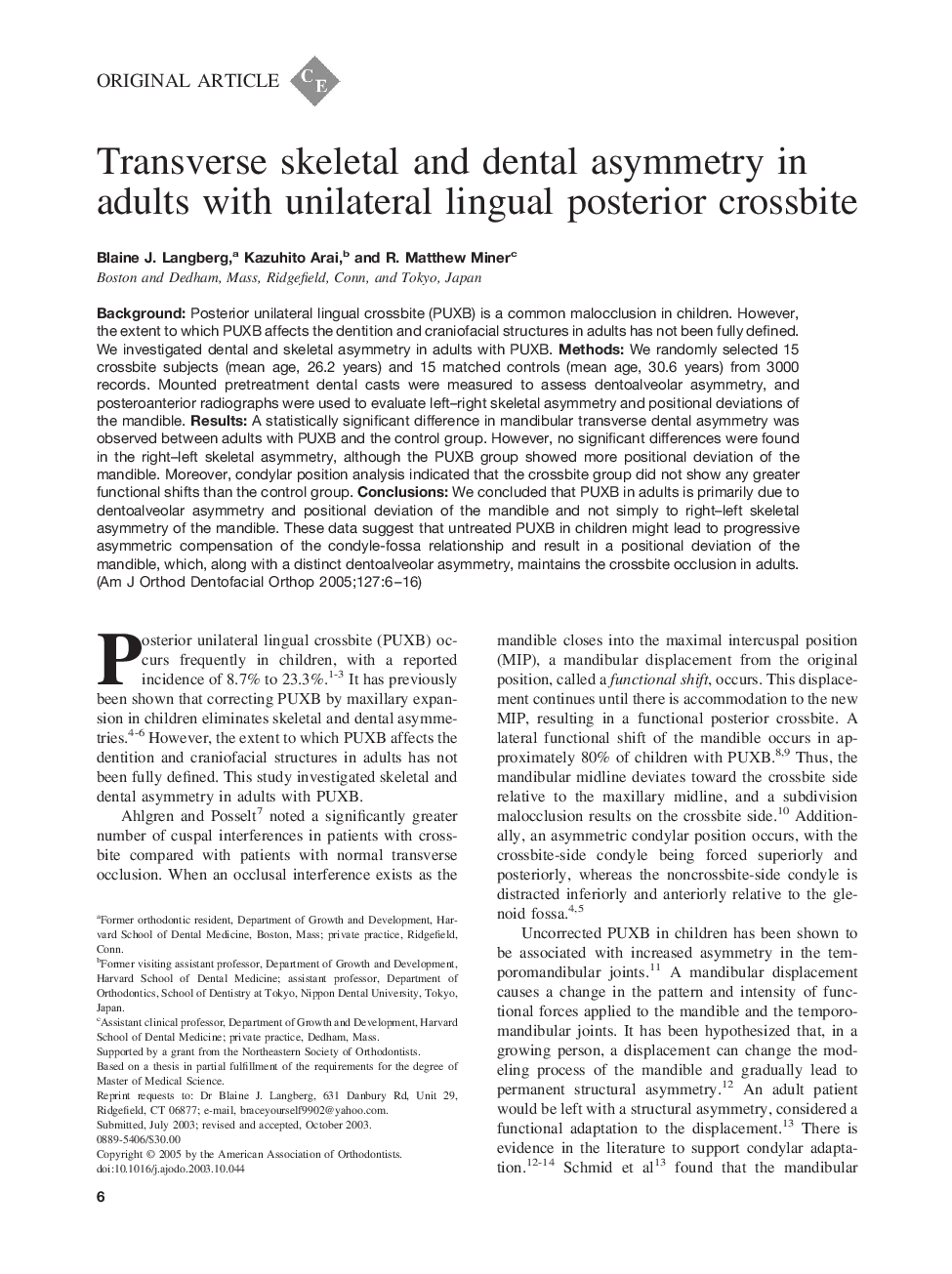| Article ID | Journal | Published Year | Pages | File Type |
|---|---|---|---|---|
| 9993138 | American Journal of Orthodontics and Dentofacial Orthopedics | 2005 | 10 Pages |
Abstract
Posterior unilateral lingual crossbite (PUXB) is a common malocclusion in children. However, the extent to which PUXB affects the dentition and craniofacial structures in adults has not been fully defined. We investigated dental and skeletal asymmetry in adults with PUXB. Methods: We randomly selected 15 crossbite subjects (mean age, 26.2 years) and 15 matched controls (mean age, 30.6 years) from 3000 records. Mounted pretreatment dental casts were measured to assess dentoalveolar asymmetry, and posteroanterior radiographs were used to evaluate left-right skeletal asymmetry and positional deviations of the mandible. Results: A statistically significant difference in mandibular transverse dental asymmetry was observed between adults with PUXB and the control group. However, no significant differences were found in the right-left skeletal asymmetry, although the PUXB group showed more positional deviation of the mandible. Moreover, condylar position analysis indicated that the crossbite group did not show any greater functional shifts than the control group. Conclusions: We concluded that PUXB in adults is primarily due to dentoalveolar asymmetry and positional deviation of the mandible and not simply to right-left skeletal asymmetry of the mandible. These data suggest that untreated PUXB in children might lead to progressive asymmetric compensation of the condyle-fossa relationship and result in a positional deviation of the mandible, which, along with a distinct dentoalveolar asymmetry, maintains the crossbite occlusion in adults.
Related Topics
Health Sciences
Medicine and Dentistry
Dentistry, Oral Surgery and Medicine
Authors
Blaine J. Langberg, Kazuhito Arai, R. Matthew Miner,
